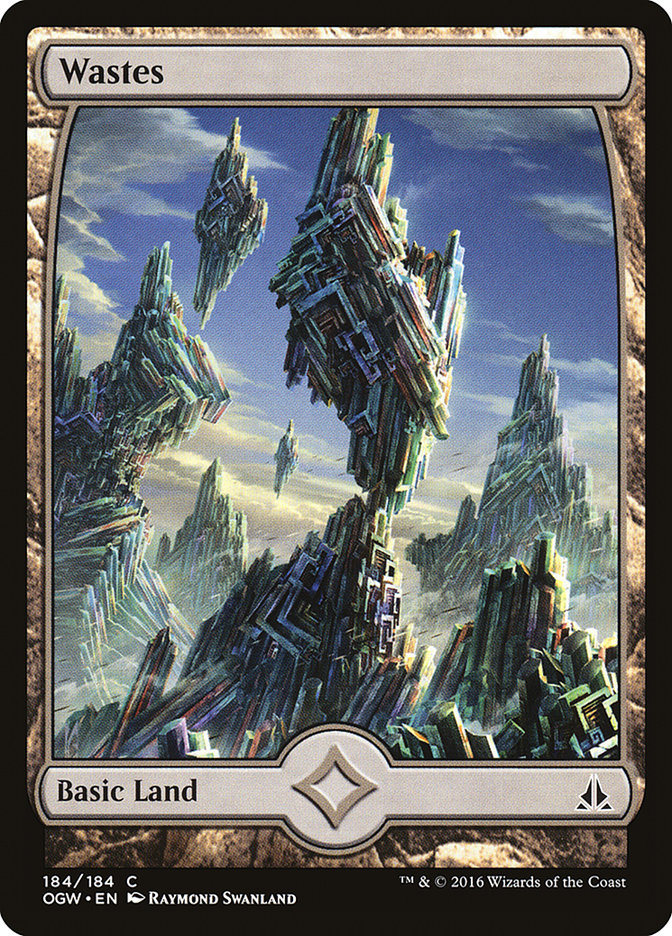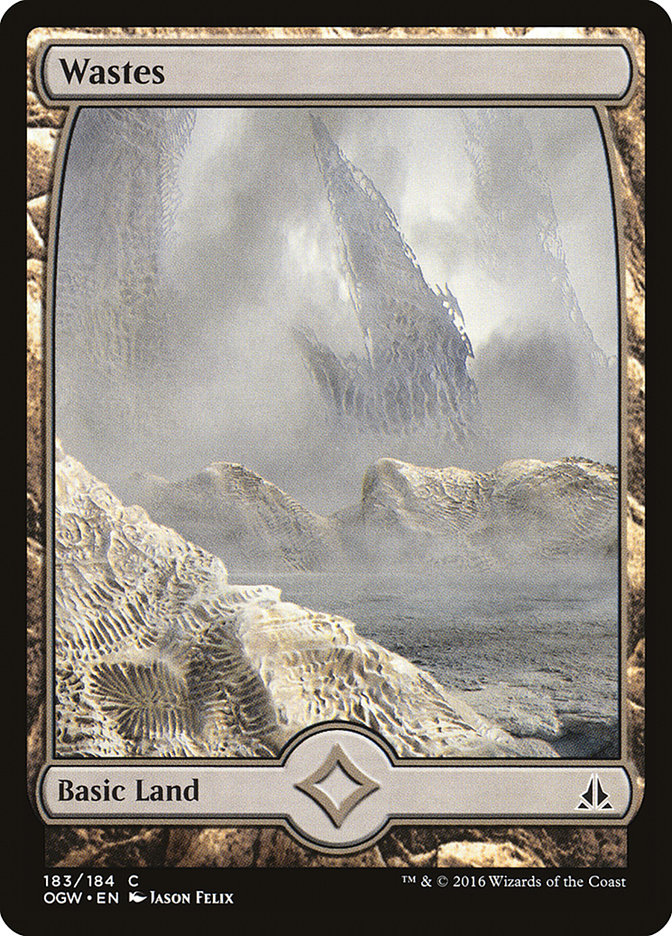The Oath has been taken! The entire set of Oath of the Gatewatch has been spoiled in all its colorless, devoid, Ally-y goodness, and there are
tons of cards within it that have me excited for Standard, Modern, Commander, and Limited. This weekend will be our first taste with the combined format of Battle for Zendikar and Oath of the Gatewatch, and now that the Ally and Eldrazi puzzles are complete, we will have a full range of
motion both in our Sealed and Draft decks, which should make for some exciting, highly flavorful interactions between the forces of unity and the forces of
destruction.
If you’re asking who I think will win, I bet it’s the Allies. If you ask who I want to win, it’s the Eldrazi.
I love colorless spells, artifacts or otherwise, so this has been a pretty good year for me. Magic Origins carried a considerably higher allotment
of artifact spells, Battle for Zendikar was packed with lots of choices to push colorless themes, and even the previous Tarkir block
pushed us into colorless territory with flavorful lands like Tomb of the Spirit Dragon, the myriad of manifest and morph cards, and the arrival of Ugin
himself. Oath of the Gatewatch redefines colorless mana as we know it, providing a “sixth” color of mana to finally represent this unique niche in
Magic.
The idea of colorless identity is nothing new; artifact-centric strategies don’t really blend with any of the five colors of magic or, from another angle,
the artifact and colorless spells of Magic represent everything about Magic, just nothing particularly as well as the colors that own those
mechanics. With this in mind, I decided to do something a little different as a celebration of the colorless flavor of this set and the colorless spells
that have led us to define it long before the return of Kozilek.
That’s right, y’all; it’s time for The Colorless Cube.
For those who haven’t played Cube format before, a “Cube” is a hand-picked subset of Magic cards specifically chosen for the purpose of drafting. The Cube
is usually constructed with a particular theme in mind, and each card is chosen carefully to work within the confines of the Cube. Instead of opening
booster packs to draft, you form “booster packs” from the sleeved Cube, providing a customized Draft environment complete with all the interactions of a
real draft with all the personality of the Cube’s creative goal. While I’ve personally built and currently possess three Cubes, my primary Cube is a Modern
peasant Cube using powerful Draft commons and uncommons from the Modern format. It has a multicolored focus, and over the years, the original colorless
components have been marginalized and removed little by little. This left a diamond shaped hole in my heart, one that could only be filled by one thing.
The prospect of a completely colorless Cube is a bit challenging for four primary reasons.
1.
The Quandary of Colorless Flavor
First, its components have to feel like something only colorless cards can and have done, and thus should feel distinct from the five colors of Magic. If
this doesn’t happen, the Cube will feel like overcosted imitations of the color or colors any particular colorless card is trying to represent. For
example, Woolly Thoctar is exciting; Phyrexian Hulk, which costs twice as much for the same effect, is not, and a Cube that fell into this trap would get
dull fast.
2.
The Uniqueness of Card Selection
Secondly, a colorless Cube can run the risk of feeling like a “best-of” album; lots of Cubes feature best-in-slot cards for particular colors, strategies,
and mana costs. Famous artifacts might grab your attention, pulling away from the fun environment you’re looking for and just duking out with the best
cards in Modern, Legacy, or Commander. This isn’t as fun as it sounds.
3.
Removal
Thirdly, there are some things colorless spells rarely do efficiently, the most notable of which is removal. Colorless removal is often underpowered,
overcosted, conditional, sorcery-speed, and/or clumsy. Removal is a necessary part of Magic, providing the essential balancing act for players deciding
what they can answer with their strategy or board and what they must handle with the cards in their hand. Without removal, a format can easily devolve into
a standoff, each player unable to leverage their board state into a win, waiting to draw the one bomb that will get them out of the mess and diminishing
the usefulness of the rest of their deck.
4.
The Creation of an Unfamiliar Environment
A colorless-only environment makes some cards way better, while completely blanking others. Certain strategies emerge that would have no place in familiar
formats, and classic strategies don’t have the support they need. Counterspells don’t really exist. Combat tricks are almost always on-board. A player’s
hand is considerably less important. Remember, historically, colorless spells have always played support; a colorless Cube demands their best cards front
and center. While daunting, this allows cards that were unplayable even at printing another chance at play.
What a challenge! Are you as excited as I am?
With the addition of Eldrazi and nonartifact colorless spells, we finally have enough to flesh out a completely colorless Cube. A standard Cube usually
consists of at least 360 cards, which provides enough cards for eight people to draft three fifteen-card packs or, as some Cubes prefer, five packs of nine
cards each. Many Cubes are larger, but this is generally considered the minimum. Since we’re bending boundaries, let’s see if we can cut that in half: a
180-card Cube, designed for four full-size drafters or potentially six, assuming a reduced, three ten-card pack allotment instead. While cutting to 360 is
generally a challenging part of building a Cube, 180 cards will mean that we’ll need a critical amount of focus in developing our strategy.
As daunting as it is, this means we need to review the breadth of Magic’s colorless spells to find what we can use to form foundational, archetypal
strategies for our drafters to play. In an attempt to keep a consistent power level, theme, and physical experience, I’ll limit the Cube to just Modern-era
cards, though I reserve the right to use pre-Modern rarity for balance purposes, if appropriate. Though you might see the word “Modern,” leave your notions
about that format at the clear, formless door, as this won’t look like any Modern format, or format in general, that you’ve ever played before.
In all, Modern has 976 spells that do not require colored mana to cast. Oath of the Gatewatch adds another seventeen spells, excluding reprints.
Once you toss in Conspiracy‘s Draft-oriented cards, you’re looking at just over a thousand cards we can use in this Cube. Although many do not
require colorless mana to cast, they either provide colored mana and/or require colored mana to be used to any effect, so those can be culled off. This
still leaves several hundred cards to slog through, but I took an afternoon and tucked in.
…
…
…
Okay.
It looks like there are some clear strategies that shine through and a few nebulous ones that I want to try. So, let’s answer obstacle number #1. The
archetypes that can be entirely supported by colorless spells are infect, mill, combo, evasion, ramp, and modular. With these archetypes in mind, let’s
find those 180 cards.
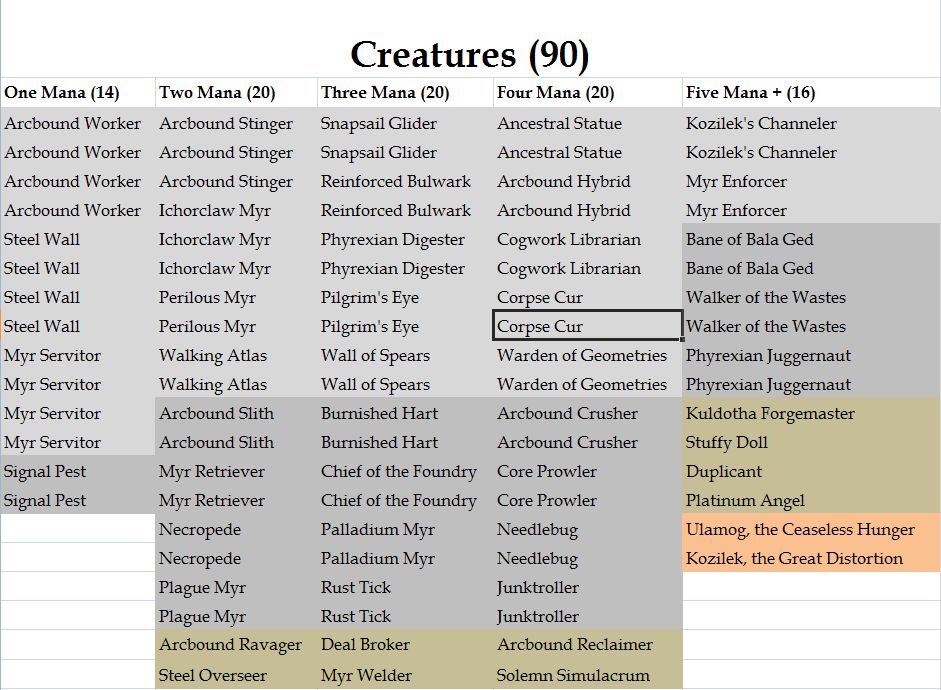
90 of those cards are creatures; these are the colorless spells that attack, block, or activate to help you achieve your goal, so having a large variety of
costs, stats, and functions is important. While each has a deck it’s best in, none of them are pigeonholed to one archetype and can play a supporting role
in at least one other strategy. Because there’s a lot, I’ll show you an image of each to refresh your memory, but focus on my favorites.
One-Drops
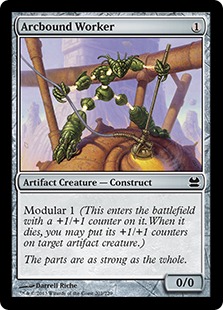
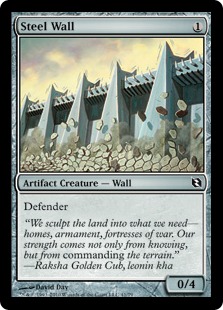
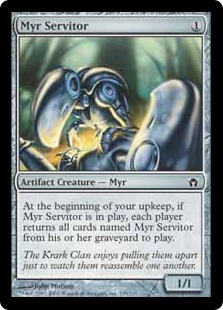
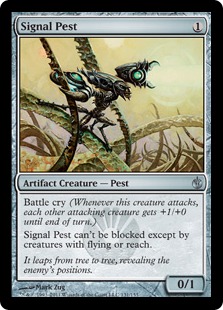

Arcbound Worker is a worker bee for sure, but Steel Wall and SIgnal Pest are, too. I like Myr Servitor as a drafting choice; it gets better the more of
them you have. If you have all four, chances are they will never truly die, but even with just one, you’ll have a constant blocker against an opposing one.
It has some fun potential with Kuldotha Forgemaster. If you have four out, sacrifice three, get any artifact, then bring those three back the next turn!
Two-Drops
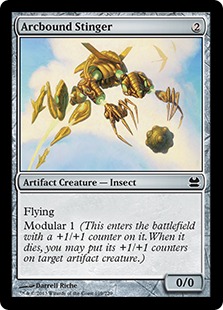
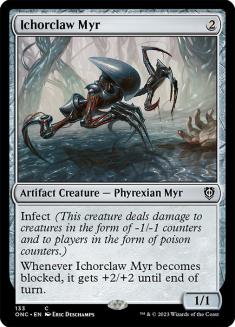
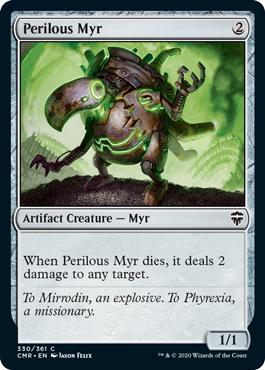
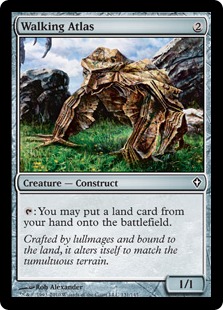
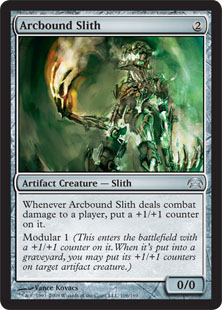
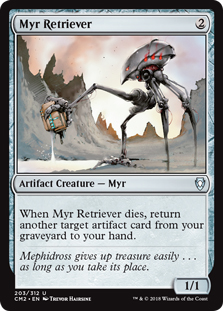
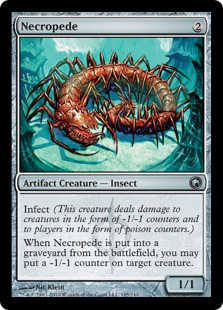
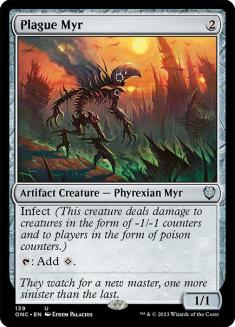
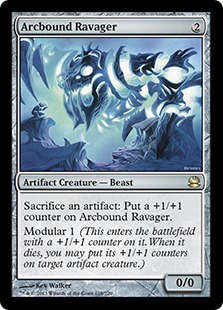


Perilous Myr is a great defensive card, providing a potential two-for-one against the aggressive strategy. Walking Atlas is a nice way to introduce
low-cost ramp while being a bit more interesting and dynamic than, say, the brand-new Hedron Crawler. Plague Myr also provides assistance to ramp while
also being a legitimate pick for infect. Finally, I’ve dedicated two of the few rares in the Cube to two of modular’s most powerful creatures. Modular is a
creature-centered strategy, so it fits. The Ravager is still useful in most strategies as a sacrifice outlet, if that’s something you need.
Three-Drops
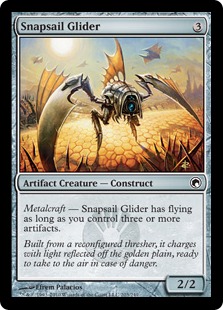
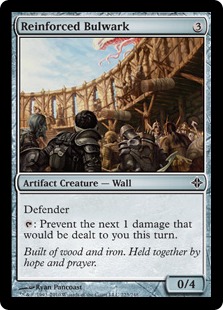
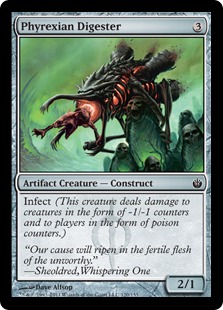
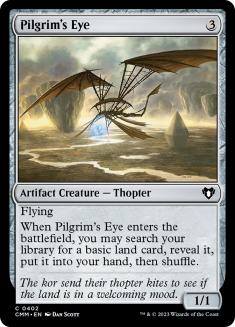
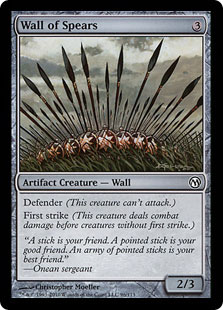
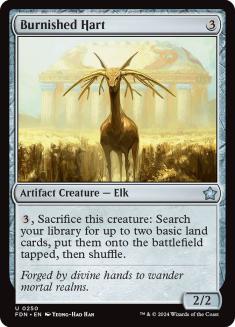
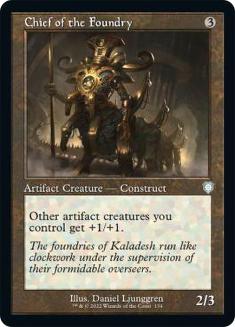
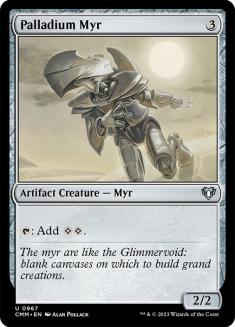
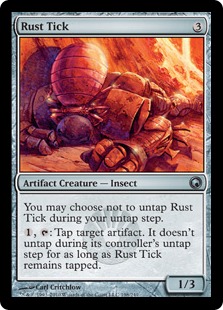
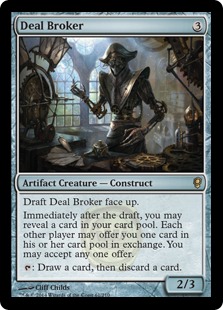
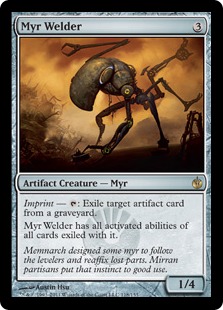

Burnished Hart finally has targets in a colorless deck; thanks, Wastes! Besides that, Chief of the Foundry is considerably stronger and a good first-pick
card if it’s the strategy you want to pursue. Rust Tick, at one time unplayable, is flush with targets in the Cube. Similarly, Myr Welder, while barely
playable as a Horned Turtle in its native format, has tons of creatures and artifacts to absorb this time around.
Four-Drops
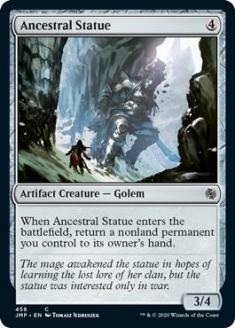
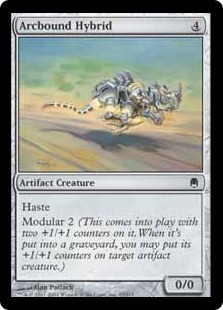
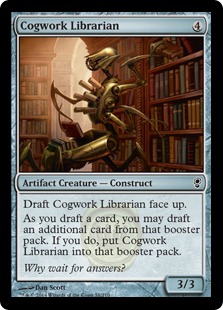
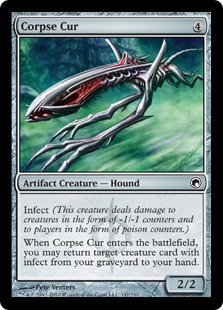
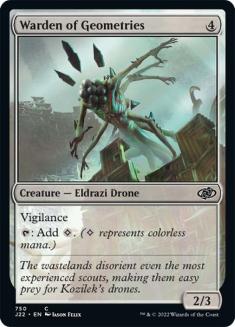
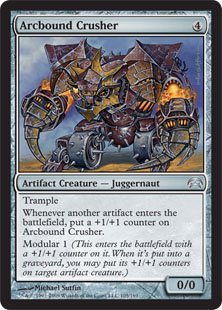
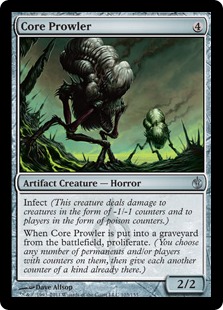
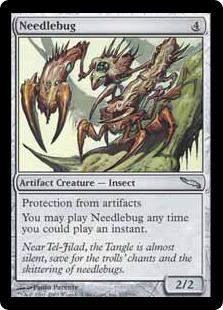
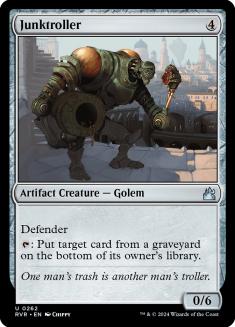
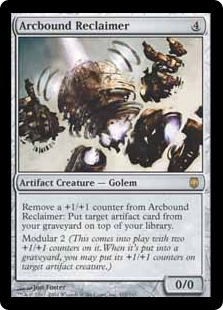
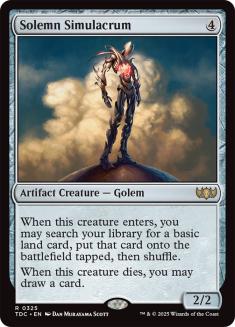

Ancestral Statue is an efficient body in this particular format, and the cost can even be beneficial with a good enters-the-battlefield effect. Cogwork
Librarian is a great Conspiracy common, and here it provides a lot of critical leverage in the draft phase. Warden of Geometries is a
fairly-costed addition to both this Cube and Standard. Needlebug is a nice one for sneaking through damage or holding off a massive attacker. Though it
cannot hold equipment, a nearly untargetable 2/2 is pretty solid nonetheless. Junktroller can protect you against mill and provide an opportunity to
shuffle your win condition back in if it hits the bin.
Five-Drops
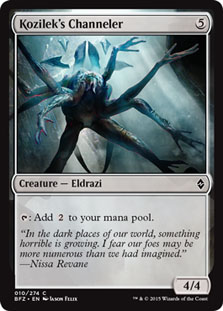
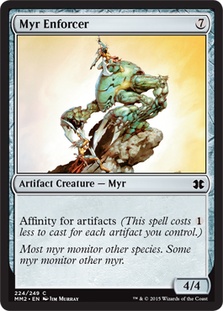
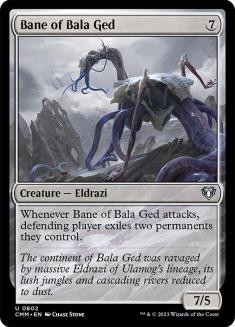
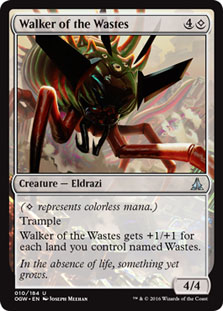
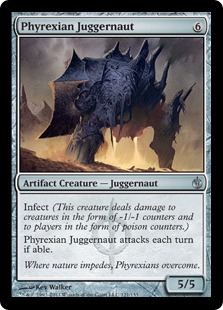
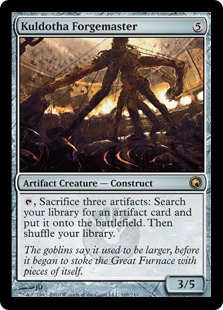
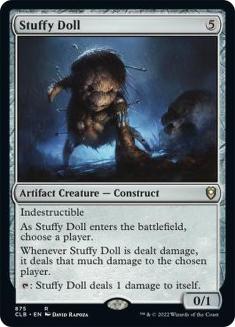
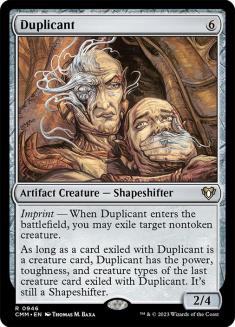
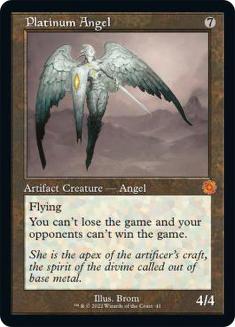
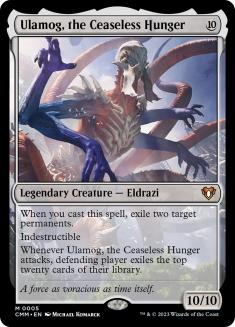
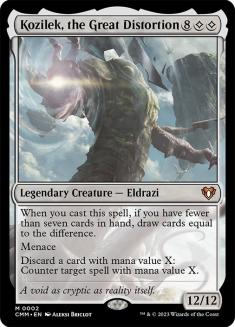

Now it’s time for the big stuff. Kozilek’s Channeler seems way too good for a common, to be honest, but it provides a huge leap forward for the ramp decks.
Regarding the bigger Eldrazi, you’ll notice a lack of annihilator, a mechanic often panned for being unfun, unfair, and unnecessary. Thus, Bane of Bala Ged
represents the only similar ability. Walker of the Wastes has potential in Standard as a hugely efficient body if there’s a deck for it, but in The
Colorless Cube, it’s bound to be a big creature no matter what. I like the Forgemaster for combo players as a critical option to find whatever neat way
they’ve found to win the game, which may include Stuffy Doll, with an interaction I’ve never considered. Duplicant is colorless removal, really, but it
also has the potential of knocking out your opponent’s bomb creature and making it your own. Think of it as colorless Persuasion. Platinum Angel can save
you from death by damage, infect, or mill; just make sure it doesn’t die! Again, while I had the option to use the older Eldrazi titans, I decided to
pursue the new ones, both to try them out and I believe they are more fair.
And now, to the rest of it.
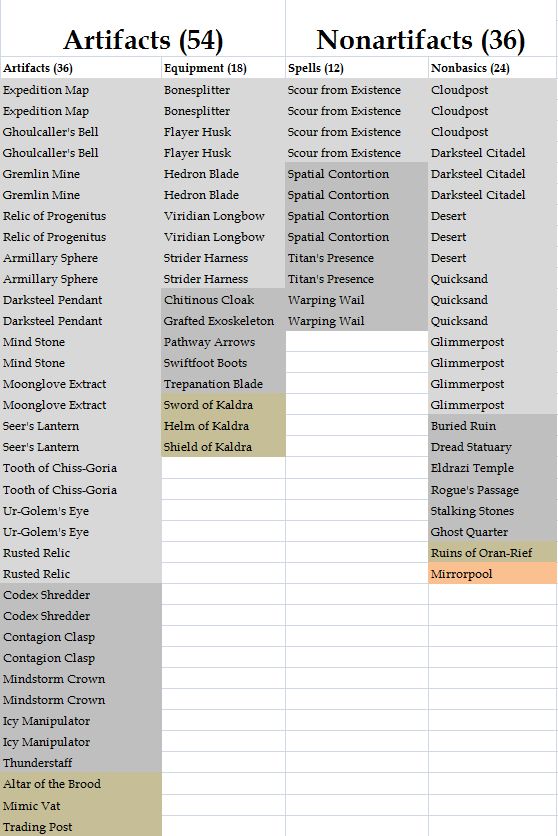
Noncreature Artifacts
The spells are perhaps more focused than the creatures, so in the interest of space, I’ll just let you check them out.
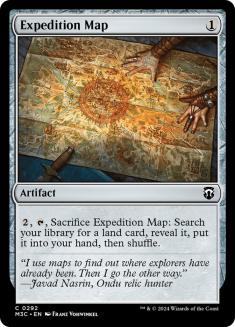
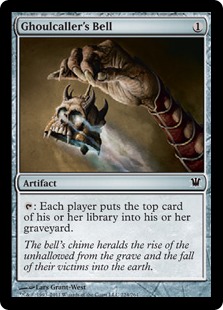

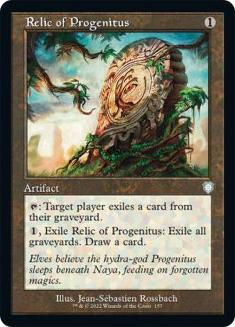
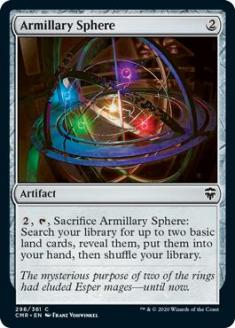
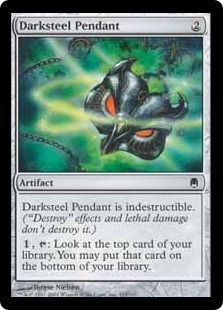
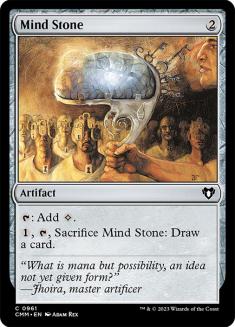


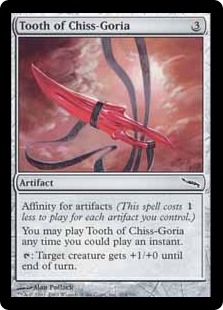
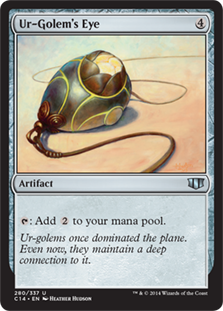
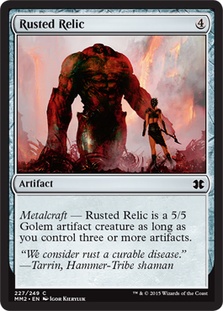
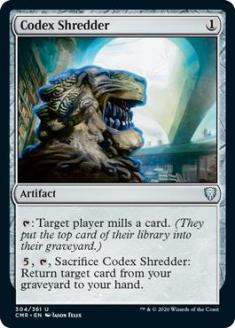
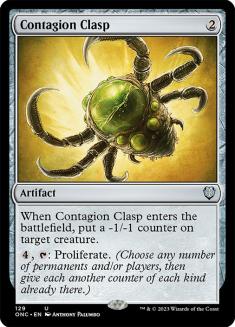
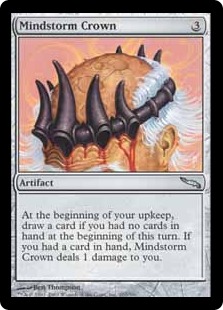
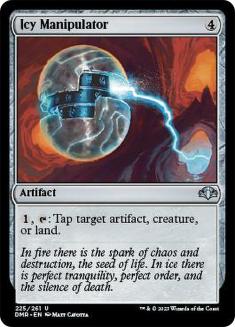
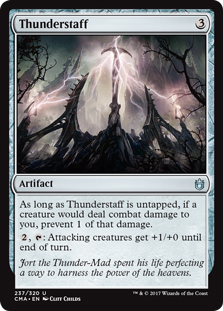
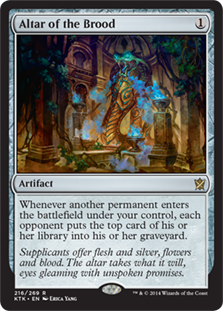
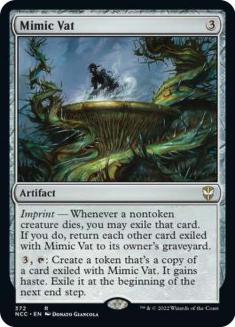
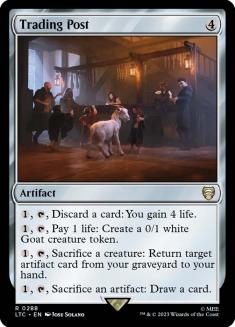

A couple standouts: Gremlin Mine is a real diamond in the rough. There were plenty of nonartifact creatures in Mirrodin Besieged, but now, this
has become a real removal spell for either aggressive decks trying to break through a wall or for defensive decks shooting down well-armored attackers.
Armillary Sphere gets you two Wastes, sure, but I’ll tell you soon why that might be pretty relevant. Codex Shredder is a nice no-mana Millstone with lots
of utility. Contagion Clasp, and the proliferate mechanic in general, has the serendipitous quality of working for both modular and infect, so
both will want it very highly. Mindstorm Crown is great for the cheap aggro deck, providing raw draw power against any deck where they can easily play out
their hand. Thunderstaff, similarly, is nice to defend against a swarm of Arcbound creatures while also buffing your own, if that’s your path. You can’t
lose. Altar of the Brood is a very powerful mill spell in a format dominated by permanents. Mimic Vat is a nice combo piece, providing endless value for a
clever player. Trading Post, well…that just couldn’t be ignored.
Equipment
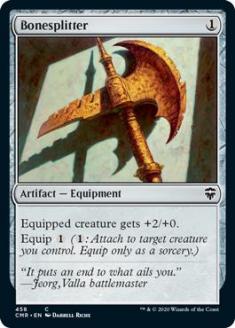
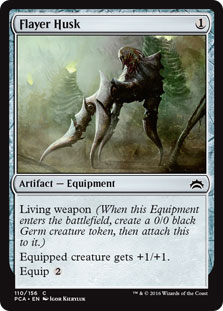
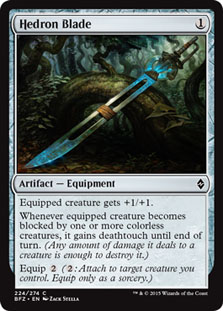
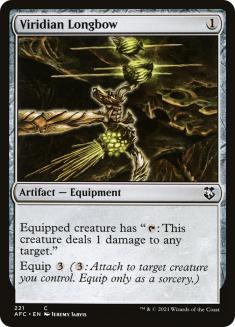

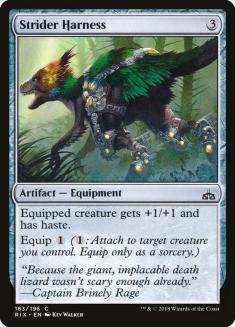
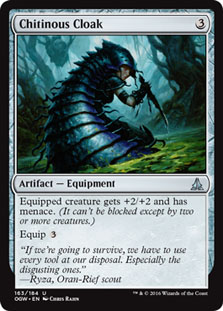
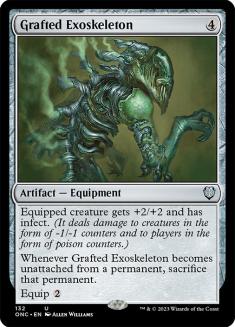
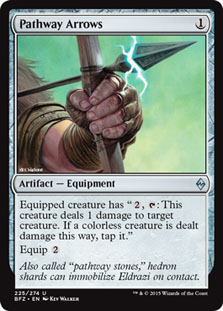

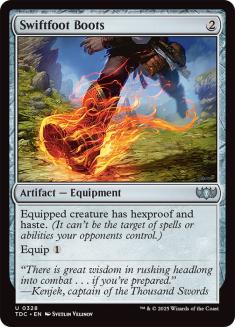
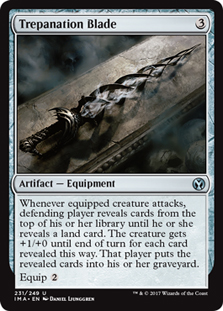
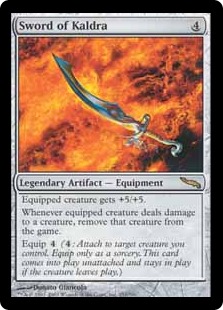
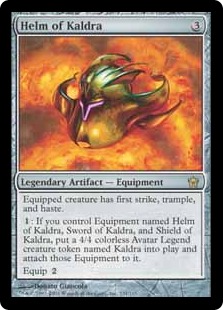
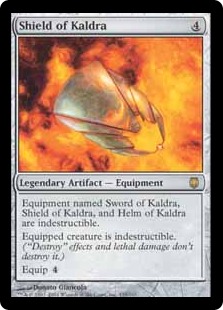

Most of the Equipment speak for themselves. Some of the “colorless matters” Equipment from Battle for Zendikar seem particularly powerful
here. As a potential “combo,” the Kaldra equipment offer a flavorful Voltron path for any Johnnies wishing to chase that dream.
The colorless spells, while few, pack a huge punch and provide much needed variety in the spellcasting suite.
Colorless Spells
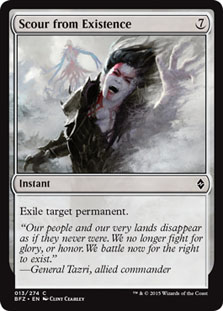
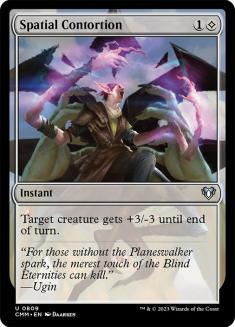
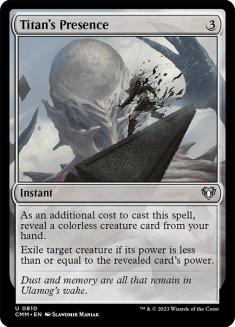
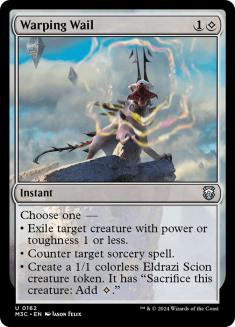

Scour from Existence is the ramp removal, providing pinpoint destruction, no matter what. Spatial Contortion seems like a good removal spell, but it can
also help equipped creatures punch through massive damage. Titan’s Presence is more conditional, but it’s far cheaper than Scour from Existence, and
sometimes, one or two power is enough to exile. Warping Wail, a card I’ll be dying to play in Standard, has so many modes. The exile effect seems great
and, while there are no sorceries in this format, there are reasons you’d want a 1/1 token that ramps.
Nonbasic Lands
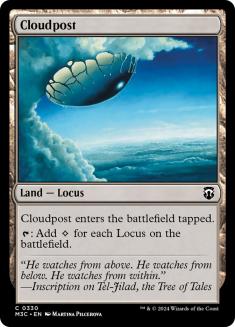
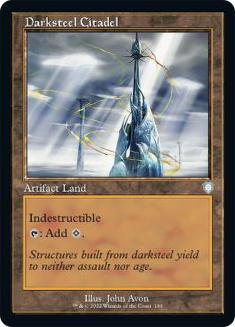

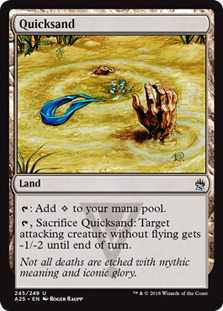
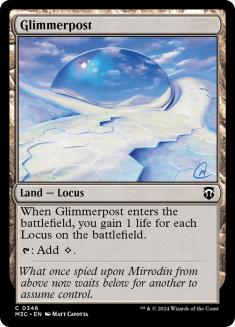

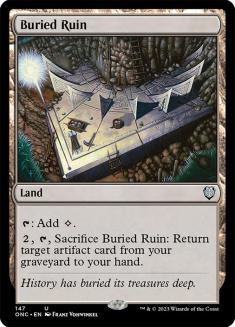
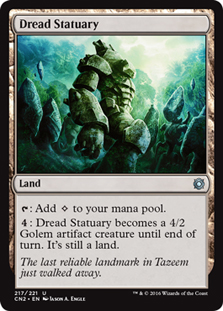
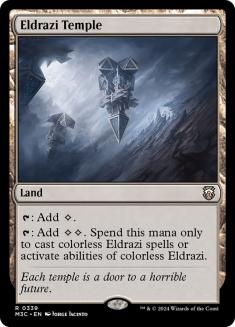
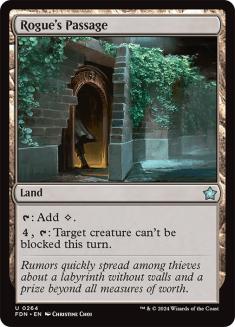

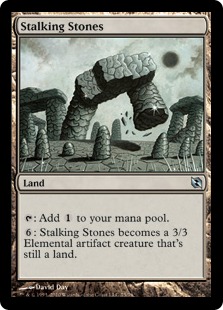
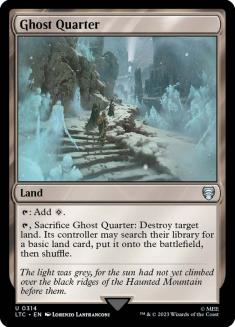

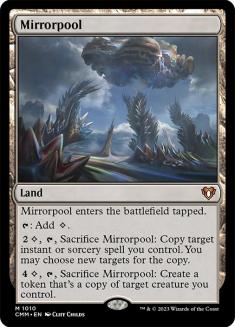

The Locus lands are bananas; because color is irrelevant, these are almost strictly better than their basic land counterparts once in play, and that is why
there aren’t a bunch of them. Desert is good for a draw-go deck to pick off nuisance infect or aggro creatures. Buried Ruin is basically a Regrowth on a
stick, and the Dread Statuary and Stalking Stones provide different modes of attack. The rare and mythic lands are from Oath of the Gatewatch and,
in my mind, support aggro and control decks very well. Both are very powerful, but you’ll rarely find them to be equally as good in the same deck.
There’s the 180 cards we’re starting. Throw in about 60-90 sleeved Wastes and we’re done, right?
Well, almost.
One of the single most frustrating parts about Limited is the gap between expectation and reality. We’ve all been there; we finished drafting our 45th card
or we’ve piled out the sixth and final pack from our Sealed pool and everything looks perfect. The curve is on point. The removal is all there. The bombs
are ready to be dropped. At least some amount of the time, we then sleeve up, proceed to mulligan to four, never draw a threat, and feel completely
defeated. What could have gone wrong? I had eighteen lands and nine removal spells! How did I not draw any of them?
Variance, my friends, is a double-edged sword. On one hand, it is a necessary part of the game that keeps people coming back to a fresh, unique experience.
On the other hand, it can come down to a game of luck and probabilities that, despite our best efforts, we will often lose through little or no fault of
our own. This is often exacerbated in Limited environments, as our potential for card advantage, library manipulation, and mana fixing is considerably
lower both in power and frequency. We expect our Draft decks to play like Constructed decks, and that’s mathematically impossible.
Here, we’re lowering variance to create skill-based interactions where we can. That’s why, when you play this Cube, every player starts each game with an
emblem that says:
“(X), Discard two cards named Wastes: Destroy target permanent with converted mana cost X that isn’t named Wastes.”
That’s it. In an attempt to provide an opportunity to meaningfully interact with your opponent’s board, every pair of Wastes you have in your hand is a
removal spell. You can’t be a jerk and blast a basic land, but you can blow up anything else. Although seemingly powerful, the cost is steep; you will
always two-for-one yourself, and you will give up the opportunity to play them as lands to power your hungry artifacts and spells. Thus, it is a critical
tradeoff. Card advantage opportunities are minimal in this format, so you can’t just outpace someone every time. So yes, you can kill that three-drop with
two Wastes, but you still have to spend the mana to do it. It also makes indestructible particularly powerful, and that is also intentional. I considered
allowing you to counter spells with converted mana cost X, too, but I thought they were almost identical and would overcomplicate things. Wastes, which
would otherwise be strictly worse than any other nonbasic land that produced mana, have new life, and hopefully, it will add a whole new dimension to the
decisions you make while playing the Cube.
As I was tweaking this emblem idea, I thought it would make a neat variant. Wouldn’t it be cool if you could do a Charm-like effect by discarding two basic
lands that share a type and paying some amount of mana? Maybe two Plains would let you give your creatures +1/+1, provide a 1/1 Soldier token, or prevent
all combat damage that turn? Might be too powerful, but you get the idea.
—
You might think you’re playing Magic with this Cube, but you are knee-deep in a colorless variant of Magic. I hope to get this built following the release
of Oath of the Gatewatch in a few weeks, and I’d love any input!
What’s your favorite colorless card from Oath of the Gatewatch, devoid or otherwise? Maybe Warping Wail has got you excited, or you like the idea
of Spatial Contortion, either for Standard or another, older format? Kozilek, the Great Distortion is pretty cool, too, and that activated ability is no
joke! As the Eldrazi march over the ruined plane of Zendikar, what is the spell you’d want to see them use?

